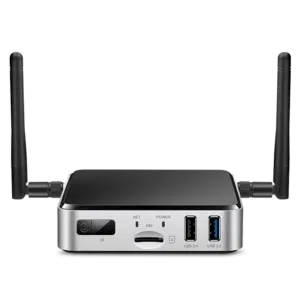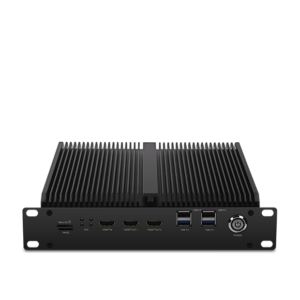Unlocking the Energy of AI on Edge Devices
Unlocking the Energy of AI on Edge Devices
Blog Article
A Comprehensive Information to Deploying AI on Edge Devices
Real-World Purposes of AI on Edge Units
Artificial intelligence (AI) is no further limited to the sphere of big, centralized knowledge centers. Because of breakthroughs in engineering, side products now perform a key role in deploying AI right wherever information is generated. But what does AI on side units suggest, and exactly why is it making this type of thrill? Here, we'll examine how edge ai hardware operates in actuality through side units and reveal its wide variety of realistic applications.

What's AI on Side Devices?
AI on side devices refers to deploying synthetic intelligence methods entirely on products like smartphones, cameras, drones, or IoT sensors. They do not require usage of centralized machines for running data; alternatively, they conduct analysis and choices locally, making the process quicker, better, and usually more secure.
The "edge" here simply identifies computing performed near or at the origin of information generation, as opposed to depending on the cloud. That change is pushed by the demands for real-time knowledge processing and the need to minimize latency, improve solitude, and minimize bandwidth usage.
Important Real-World Programs of Side AI
1. Intelligent Security
AI-powered cameras built with facial recognition, activity detection, and anomaly recognition are transforming detective systems. Side products in this domain may analyze movie channels in real-time to recognize dubious activities, eliminate false alerts, and improve community safety. Like, AI formulas can find strange actions and attentive authorities instantly without the need to send movie data to a central server for analysis.
2. Healthcare Checking
Wearable products and portable medical gear are leveraging m.2 ai accelerator for handling wellness information more efficiently. Edge-based AI in devices like wellness trackers and smartwatches monitors users' vitals, such as for instance heartrate, air degrees, or body pressure, in real-time. These programs analyze knowledge domestically and give instant feedback, paving just how for faster intervention throughout emergencies.
Beyond wearables, advanced medical imaging units equipped with on-device AI may discover signals of conditions like cancer, allowing early in the day diagnoses even yet in rural places without net connectivity.
3. Autonomous Cars
Self-driving vehicles are among probably the most well-known examples of side AI in action. With sensors, cameras, and LiDAR systems providing as data places, AI computations take position onboard these vehicles to produce split-second decisions. From detecting pedestrians and obstacles to navigating town roads, side AI ensures that the car operates reliably and efficiently. The real-time control capability of side units reduces the dependence on high-latency cloud programs, ensuring safety in life-critical scenarios.
4. Retail Analytics
Side products in retail settings are helping companies analyze consumer behavior. Clever racks and AI-equipped cameras may identify client preferences, monitor stock, and even modify in-store experiences in actual time. The info developed from these devices helps suppliers produce educated decisions, improve customer care, and improve inventory management.

5. Professional IoT
Factories and industrial plants are adopting edge AI to revolutionize their tracking and automation processes. AI-powered sensors on machinery detect possible flaws long before they lead to costly failures. Predictive maintenance pushed by edge AI reduces downtime, improves production, and guarantees security on the manufacturing floor.
6. Personalized Experiences in Client Units
Your smartphone is a leading example of how side AI personalizes individual experiences. Functions such as style personnel, adaptive camera options, and on-device language translation use real-time AI to react to individual wants without giving sensitive and painful information to additional servers. That fosters equally convenience and solitude for the finish user.
The Growing Affect of Side AI
The ownership of AI on side devices continues to spike, pushed by industries' increasing demand for low-latency, real-time processing, and better information privacy. Their applications are reshaping industries including healthcare and automotive to public safety and retail. By placing AI's energy nearer to wherever information is produced, side products are not only increasing efficiency but additionally demonstrating the unlimited potential of creativity in the current linked world. Report this page